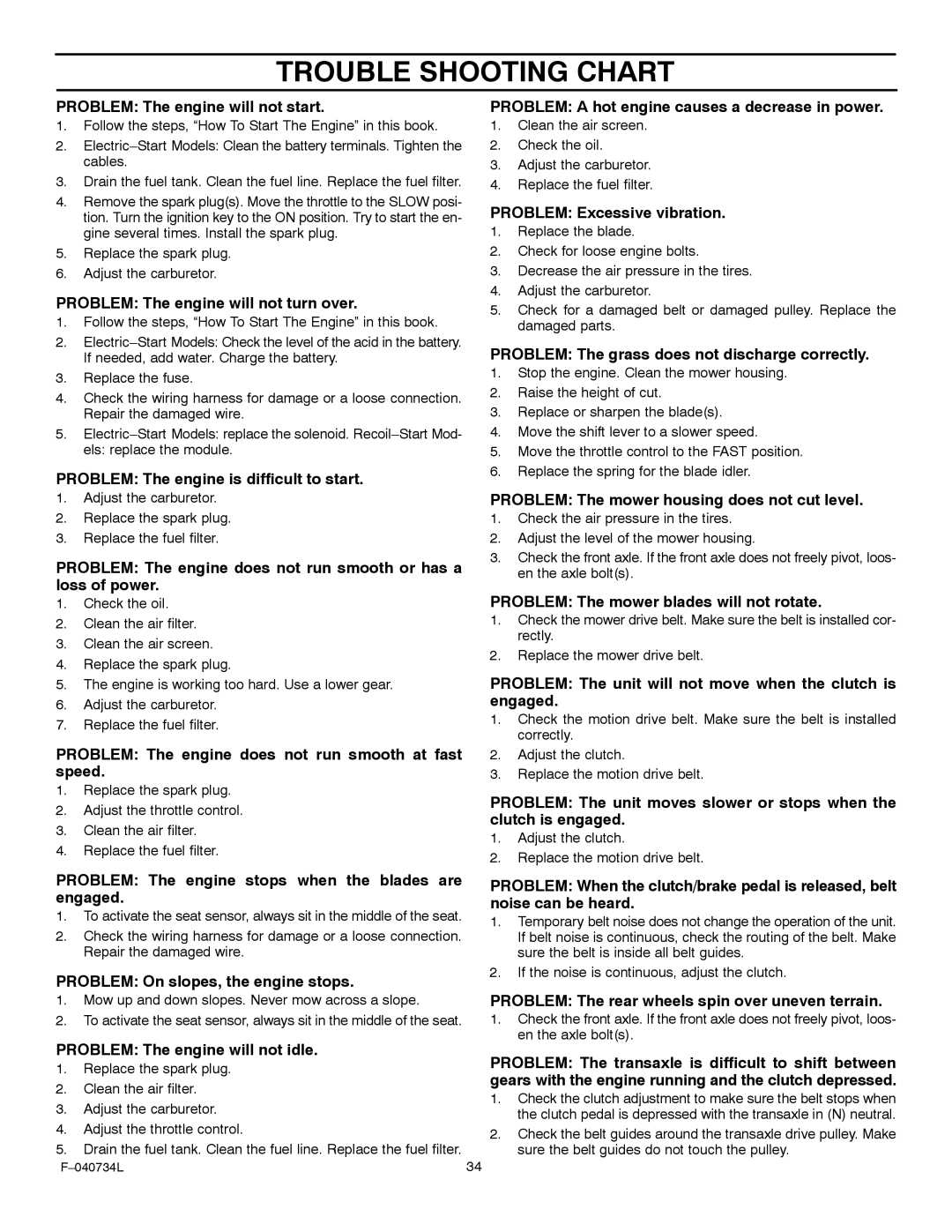425015x92A specifications
Murray 425015x92A is a state-of-the-art piece of equipment showcasing advanced engineering and innovative technologies designed for optimal performance in various applications. This model is distinguished by its robust build and versatile functionality, making it an ideal choice for both industrial and commercial sectors.One of the key features of the Murray 425015x92A is its high-efficiency motor. The motor is designed to minimize energy consumption while maximizing output, which not only lowers operational costs but also contributes to sustainability efforts. Coupled with an advanced cooling system, the motor maintains optimal operating temperatures, ensuring reliability and longevity.
The device is equipped with smart technology that enhances its performance. This includes an intuitive control panel that allows users to easily monitor and adjust settings according to their needs. With digital displays and user-friendly interfaces, operators can quickly access real-time data and make informed decisions on performance optimization.
In terms of safety features, the Murray 425015x92A integrates several protective mechanisms. These include overload protection, emergency shut-off switches, and safety interlocks that prevent accidental operation. Such features ensure that both the equipment and its operators remain safe during use.
Durability is another characteristic that sets the Murray 425015x92A apart from its competitors. Constructed with high-grade materials and components, it is designed to withstand harsh working environments. It can resist dust, moisture, and other environmental factors, making it suitable for use in various conditions, from manufacturing floors to outdoor job sites.
The versatility of the Murray 425015x92A is also noteworthy. It can be configured for multiple applications, from heavy-duty industrial tasks to lighter commercial projects. Its adaptable design allows for quick modifications, increasing its utility across different fields.
Additionally, the equipment is backed by a comprehensive support system. Murray provides extensive customer service, including installation assistance, technical support, and maintenance options. This commitment to customer satisfaction ensures that users can rely on their equipment for sustained performance.
In conclusion, the Murray 425015x92A is an exemplary model reflecting a blend of efficiency, safety, and versatility. With its advanced technologies and robust construction, it stands as a valuable asset for diverse applications across various industries, making it a preferred choice for professionals seeking reliability and performance.
